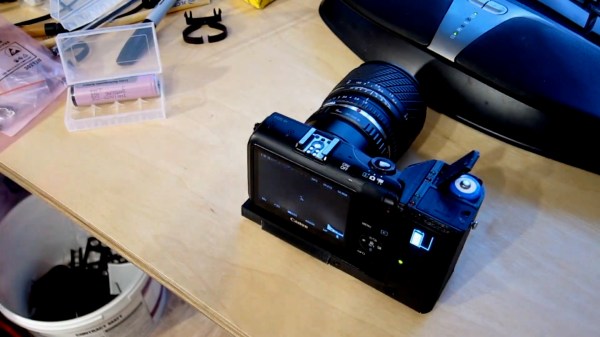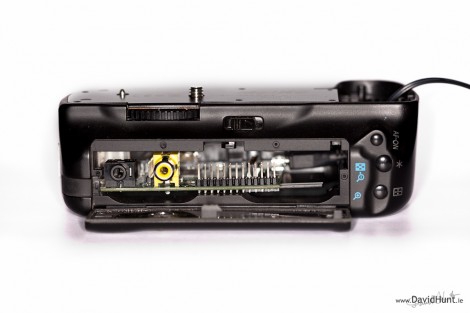There’s nothing worse than being in the middle of an important shot, only to have the camera’s batteries die on you. The losses can be very real, so it’s best to avoid them entirely. In an effort to do so, [funkster] built himself a battery grip for his Canon EOS M.
The hack is based around the venerable 18650 battery, packing 3.6V of lithium-ion goodness into a compact metal can. [funkster]’s build has slots for two of these cells, powering the camera off of one and keeping the other in reserve. The cells are monitored by a STM32 microcontroller, which switches from one battery to another as they run out or are removed. This allows batteries to be swapped while the camera is on – a highly useful feature. There’s even an OLED display to keep an eye on the state of charge of each cell.
The manner in which power is connected to the camera is rather amusing. An original Canon battery that slides inside the camera was gutted and turned into a simple adapter for the battery port. The battery grip, which wraps around the camera body, connects to this via pin headers that pass through a hole drilled in the camera’s case. It’s a permanent mod, but one [funkster] is happy with for the added usability – especially as doing it this way still provides easy access to the SD card slot.
Keeping a camera juiced on the go can be a headache without the right gear. [funkster] demonstrates that if you can’t buy it, you can always build it yourself. If your problem isn’t battery power, but your camera is overheating, you can of course fix that too. Video after the break.
Continue reading “A Hot-Swappable Battery Grip Keeps The Camera Rolling”













